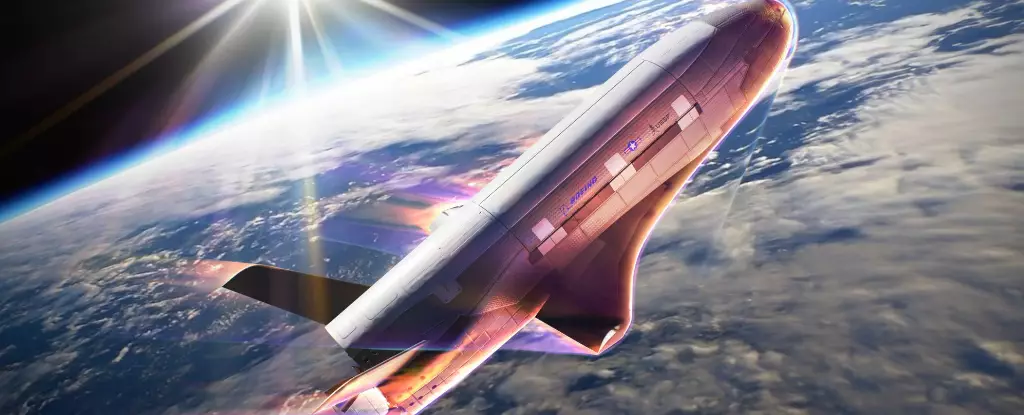Since its inaugural flight in 2011, the X-37B Orbital Test Vehicle (OTV) has intrigued both space enthusiasts and defense analysts alike. Built by Boeing and operated by the United States Space Force (USSF), this autonomous and reusable spacecraft has embarked on a mission beyond mere exploration. Launched into Low Earth Orbit (LEO), which lies between 240 to 800 kilometers (150 to 500 miles) above Earth, the X-37B is piloted remotely and is primarily tasked with technological demonstrations and experiments that could significantly influence future space operations. Most recently, on December 29, 2023, the X-37B commenced its seventh endeavor, referred to as OTV-7, which promises to delve deeper into the effects of space radiation and the advancement of Space Domain Awareness (SDA) technologies.
The ongoing OTV-7 mission is noteworthy for its ambitious approach toward space operations. A key aspect of this mission is the implementation of adroit orbital maneuvers that involve aerobraking. By maneuvering the spacecraft to graze the upper reaches of Earth’s atmosphere, the X-37B seeks to reduce its velocity and modify its orbit with minimal fuel consumption. This technique is not just a display of advanced engineering but also a strategic measure aimed at enhancing the craft’s stealth capabilities against potential adversaries. Such innovative maneuvers underscore the increasing emphasis on agility and adaptability in military space operations.
The aerobraking maneuver marks a significant first for the X-37B and boldly echoes operational strategies employed in prior missions—both robotic and human-operated—to other celestial bodies. Historically, similar techniques have been used by vehicles destined for Mars, where the atmospheric conditions necessitated careful navigation and orbital adjustments. The historical successes of missions like the Mars Global Surveyor and the Mars Reconnaissance Orbiter exhibit the viability of this technology in practical applications that benefit both exploration and military objectives.
Technological Advancements and National Security
The implications of the X-37B’s capabilities stretch far beyond technological curiosity; they directly impact national security dynamics. As Secretary of the Air Force Frank Kendall has emphasized, the recent aerobraking operations and subsequent experiments highlight the USSF’s commitment to pioneering innovative methodologies essential for securing American interests in space. Meanwhile, Chief of Space Operations Gen. Chance Saltzman has underscored the importance of this milestone, framing it as pivotal to enhancing the US’s proficiency in navigating an increasingly contested space environment.
The military rationale behind such operations can be observed in the remarks made by former USAF Secretary Heather Wilson. Her insights reflect a sophisticated understanding of both the tactical advantages and psychological impacts the X-37B can impose on adversaries. The ability to execute unpredictable orbits complicates tracking efforts for other nations, thereby heightening strategic uncertainty. Such developments deepen the need for more substantial international dialogue concerning space security and norms, given the opaque nature of military space operations today.
While much of the public fascination with the X-37B revolves around its military applications, the vehicle’s experimental nature facilitates significant scientific opportunities as well. Among the research initiatives aboard the OTV-7 mission is the “Seeds-2” experiment, which aims to study the impact of space radiation on plant seeds provided by NASA. This inquiry into biological resilience in extraterrestrial conditions holds immense potential for future deep-space missions and the possibility of cultivating life beyond Earth, thus extending human presence in space.
Moreover, the X-37B will also undertake operational trials involving emerging SDA technologies designed to bolster the United States’ ability to monitor and respond to activities in space. The integration of these technologies will fortify the US’s strategic posture in maintaining the space domain, providing a framework for protective measures against cyber threats and the proliferation of space debris.
As it embarks on its latest mission, the X-37B continues to captivate the imagination and scrutiny of global observers. This unique space vehicle stands at the intersection of military ambition and scientific exploration, operating in a realm often marked by uncertainty and intrigue. While the veil of secrecy surrounding its precise capabilities and objectives remains intact, it’s evident that the X-37B is more than just a tool of surveillance; it embodies a strategic imperative for the United States as it seeks to cement its foothold in the evolving landscape of space operations. As we look to the future, the outcomes of OTV-7 could well shape the trajectory of both military and scientific endeavors in the cosmos.

